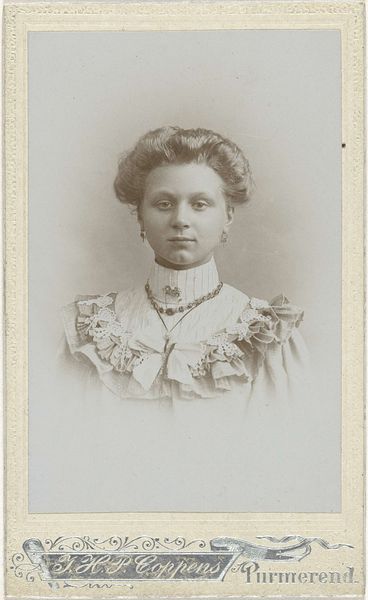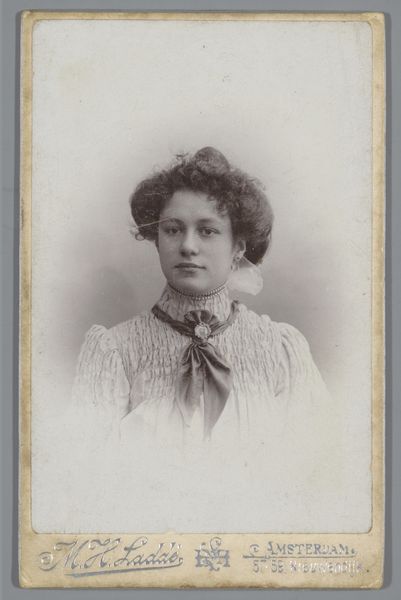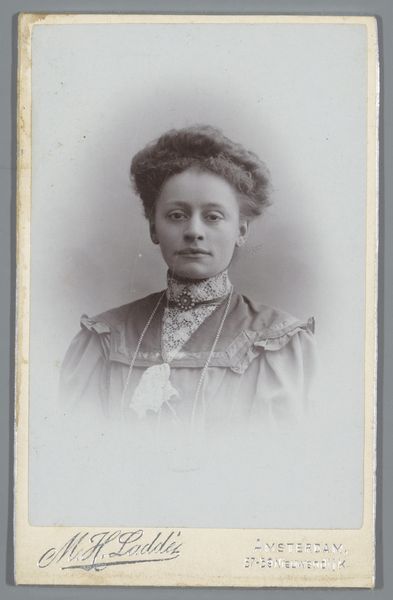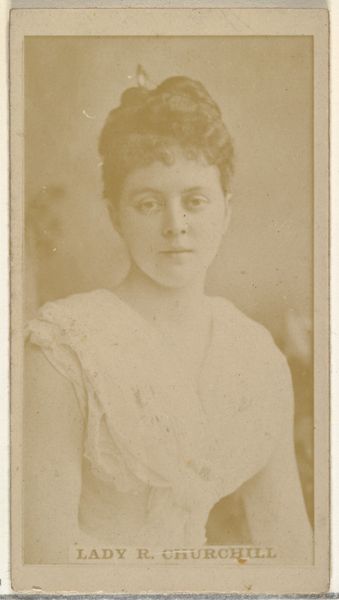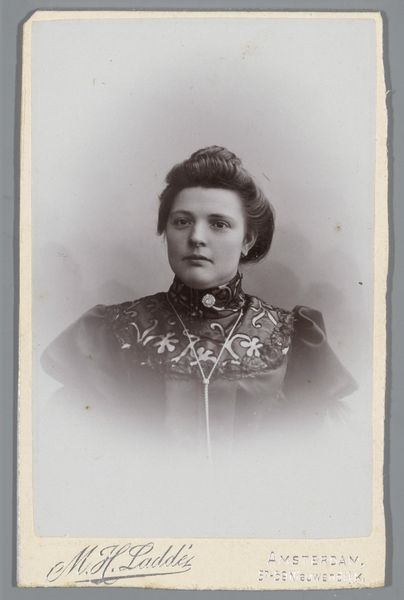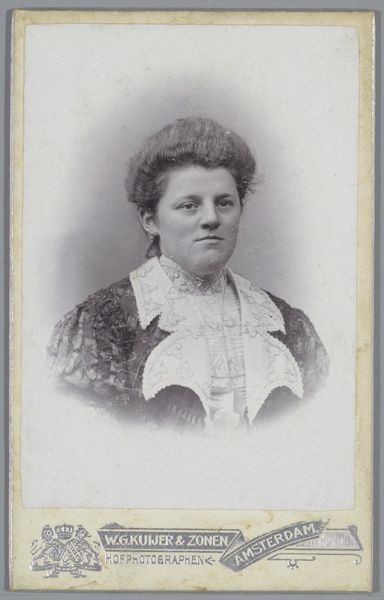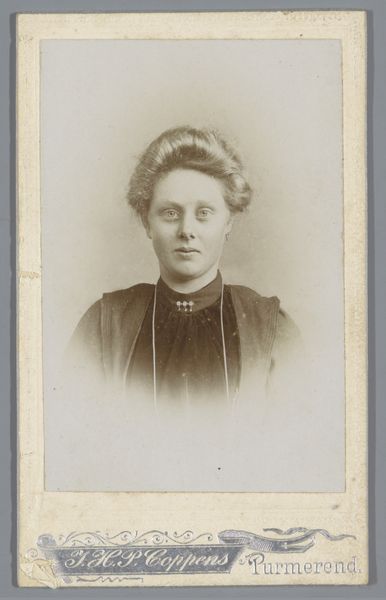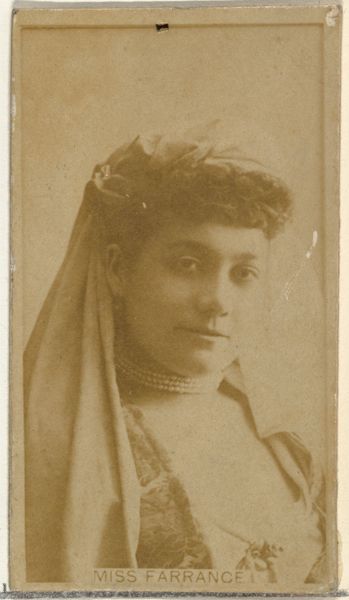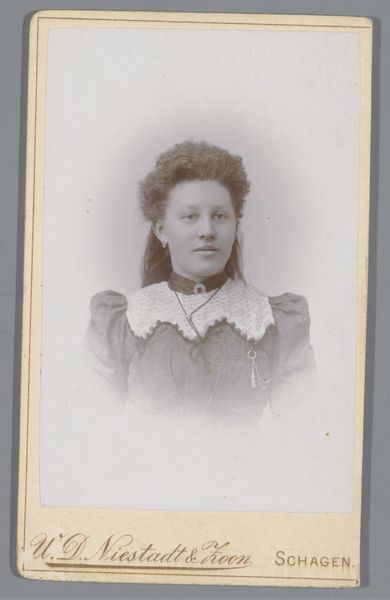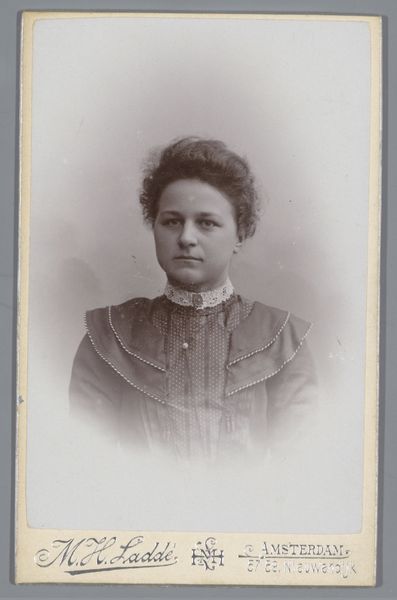
photography
#
portrait
#
photography
#
realism
Dimensions: height 92 mm, width 60 mm, height 105 mm, width 62 mm
Copyright: Rijks Museum: Open Domain
Editor: Here we have Machiel Hendricus Laddé's photograph, "Portret van Neeltje Haremaker," created sometime between 1890 and 1920. The soft focus lends it a certain dreamlike quality. What jumps out at you when you examine this piece? Curator: Considering this photograph's production date, I'm drawn to the albumen print process and the studio setting. Who had access to photography then, and what was being recorded? This isn’t a quick snapshot. Neeltje, and someone financially supporting her and this photographic process, intentionally chose this particular mode to represent herself. How does that change the way we "see" this portrait? Editor: That's fascinating! I hadn't considered the financial and social implications of simply *having* a portrait taken at that time. Do you think the way Laddé posed Neeltje reflects the societal expectations of women during that period? Curator: Absolutely. Look at the controlled posture, the delicate lace – even the softening effect of the photographic print works to create a particular type of genteel representation of womanhood. And the lack of harsh edges… what are the class implications of this very gentle photographic image production and process, for the studio workers *and* subject of this piece? What kind of labour produced it? How might it contrast with photographs of working-class individuals from the same era? Editor: I never would have looked beyond the surface without that perspective! I see so much more in this than just a pretty picture. Curator: Indeed! By interrogating the material conditions of this photograph's production and viewing, we reveal social narratives of class and gender from this period.
Comments
No comments
Be the first to comment and join the conversation on the ultimate creative platform.
